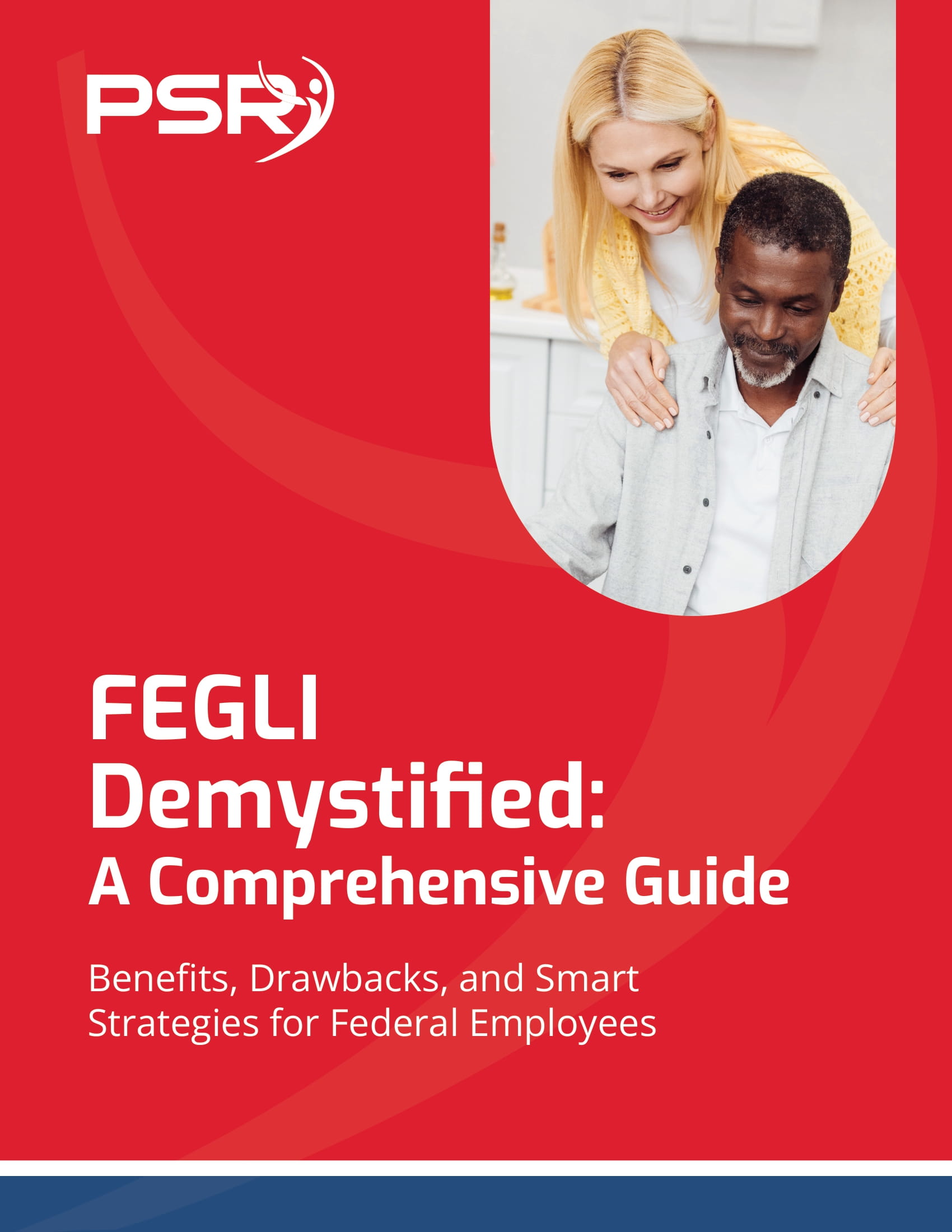Key Takeaways
-
Federal retirees often underestimate how FEGLI coverage changes after retirement, leading to reduced benefits or increased costs at a time when they need stability the most.
-
Understanding the timelines, cost shifts, and coverage reductions is essential to planning for supplemental life insurance needs or alternative strategies.
The Reality of FEGLI Coverage After Retirement
- Also Read: How Civilian Employees Can Turn Military Time Into a Bigger FERS Pension
- Also Read: Dropping FEGLI Sounds Smart—Until You Realize What It No Longer Covers After Retirement
- Also Read: Hitting 20 Years in Law Enforcement? Here’s What You Can Expect From Your Pension
When you first enroll in the Federal Employees’ Group Life Insurance (FEGLI) program, the coverage seems like a straightforward safety net. However, in retirement, the landscape shifts dramatically. Many federal employees today are outliving their initial FEGLI expectations, and the results can be financially and emotionally jarring.
How FEGLI Transforms at Retirement
When you retire, you must make a crucial election about how much of your Basic and Optional FEGLI coverage you want to continue. Your choices determine your future costs and benefits, but the structure changes considerably:
-
Basic Coverage: You can choose a 75% reduction, 50% reduction, or no reduction.
-
Optional Coverage (Options A, B, C): Coverage begins reducing or costing more immediately or within a few years post-retirement, depending on the elections you make.
Many retirees expect the generous government subsidies to continue indefinitely. In reality, the full cost of coverage gradually shifts onto your shoulders.
Timeline of FEGLI Changes After Retirement
-
At Retirement: You elect your reduction options.
-
Starting at Age 65: If you chose the 75% or 50% reduction, reductions begin at age 65 or retirement, whichever is later.
-
Gradual Reductions: For the 75% reduction, Basic coverage reduces by 2% each month until it reaches 25% of the pre-retirement amount.
-
Cost-Free Period: After reductions for Basic insurance, you no longer pay premiums.
Meanwhile, premiums for “no reduction” Basic and Optional coverage remain, and they rise steeply every five years.
Cost Trends That Catch Retirees Off Guard
By 2025, the reality for many is clear: FEGLI premiums escalate dramatically, especially after age 65.
-
Option B and C Costs: Premiums for Optional B and C coverage increase every five years until age 80.
-
No Reduction Costs: If you choose “no reduction” Basic insurance, premiums continue for life and rise every five years.
As a result, retirees can face life insurance bills that consume a significant share of their fixed retirement income.
Why You Might Outlive Your FEGLI Expectations
People are living longer in 2025 than when FEGLI structures were initially designed decades ago. With average life expectancy well into the 80s, many federal retirees now:
-
Outlive their FEGLI reductions.
-
Experience decades with minimal life insurance coverage.
-
Face rising premiums they did not anticipate in their financial plans.
Longevity, while a gift, creates a new set of planning challenges for government retirees relying on FEGLI.
Common Misunderstandings About Post-Retirement FEGLI
Many retirees find themselves confused because of misconceptions about how their benefits will work. Key misunderstandings include:
-
Assuming FEGLI remains the same after retirement.
-
Believing the government continues to pay a significant share of premiums.
-
Thinking Optional insurance is “set it and forget it.”
In reality, FEGLI coverage becomes a personal financial responsibility with fewer government contributions after retirement.
Your FEGLI Reduction Choices Explained
Here is a closer look at the choices you make at retirement and how they play out over time:
75% Reduction for Basic Coverage
-
Reduces to 25% of pre-retirement amount.
-
Reduction begins at age 65 or retirement, whichever is later.
-
Premiums stop once reductions are complete.
-
Most affordable long-term option.
50% Reduction for Basic Coverage
-
Reduces to 50% of pre-retirement amount.
-
Costs less than no reduction but more than 75% reduction.
-
Premiums are lower than “no reduction” but continue for life.
No Reduction for Basic Coverage
-
Maintains 100% of the original coverage.
-
Premiums continue to rise every five years.
-
Most expensive option long term.
Choosing no reduction may make sense if you need to leave behind a larger benefit—but be prepared for escalating premiums.
Evaluating Your FEGLI Optional Coverage
FEGLI Options B and C allow you to purchase additional coverage based on your salary or for family members. However, in retirement:
-
Premiums rise sharply at ages 65, 70, 75, and 80.
-
Costs may eventually exceed the benefit’s value if you live long enough.
Some retirees opt to reduce or cancel Optional coverage when costs climb after retirement to preserve income.
Strategies for Managing Life Insurance Needs Post-Retirement
To prepare for life beyond FEGLI, it’s important to consider alternatives or supplemental plans. Strategies include:
-
Relying on the reduced Basic coverage. If you can afford to live without a large death benefit.
-
Purchasing private life insurance earlier. Private policies bought before retirement often lock in rates based on younger age and better health.
-
Building savings or investments. Cash savings and designated retirement accounts can sometimes replace the need for life insurance.
FEGLI can be a piece of your overall strategy, but rarely is it enough on its own once you live beyond your original expectations.
Questions You Should Be Asking Now
In 2025, smart retirees are asking the following critical questions about their FEGLI plans:
-
How long will my coverage last with my current election?
-
When do premium increases hit, and by how much?
-
What percentage of my retirement income will insurance premiums consume by age 70? 75? 80?
-
Do I need full coverage for the rest of my life, or only for a specific number of years?
-
Are there other life insurance options that better fit my financial plan today?
Proactively asking these questions can prevent unpleasant surprises years down the road.
The Impact of Rising Healthcare Costs
One of the major challenges of outliving FEGLI coverage expectations is healthcare. As you age, healthcare needs—and expenses—grow.
-
Higher out-of-pocket medical costs may limit how much you can allocate toward rising insurance premiums.
-
Unexpected long-term care needs may strain your income.
Factoring in future medical expenses when making FEGLI elections is essential for creating a sustainable retirement plan.
How to Review Your FEGLI Elections Periodically
Retirement isn’t the end of your benefits planning journey. Reviewing your FEGLI coverage every 2-3 years is critical:
-
Assess whether your need for life insurance has changed.
-
Confirm whether rising premiums are still affordable within your budget.
-
Explore if reducing or cancelling Optional coverage could free up cash flow.
Regular reviews keep you aligned with your evolving retirement realities.
Why Talking to a Professional Makes a Difference
Life insurance is not a “set it and forget it” piece of retirement planning. It evolves as your health, finances, and goals shift.
A licensed professional can help you:
-
Analyze your FEGLI elections.
-
Calculate future premium increases.
-
Compare supplemental life insurance strategies.
-
Create a customized plan that fits your life expectancy and financial goals.
Getting expert advice today can save you significant stress and financial strain later.
Protecting Your Retirement Lifestyle While Managing FEGLI
Living a long, full retirement is a wonderful accomplishment—but only if your financial plans, including life insurance, grow with you. Outliving your original FEGLI expectations can create financial gaps that are hard to fill without preparation.
Review your elections carefully. Revisit your coverage every few years. And if you need help understanding your choices, get in touch with a licensed professional listed on this website to discuss your options.









